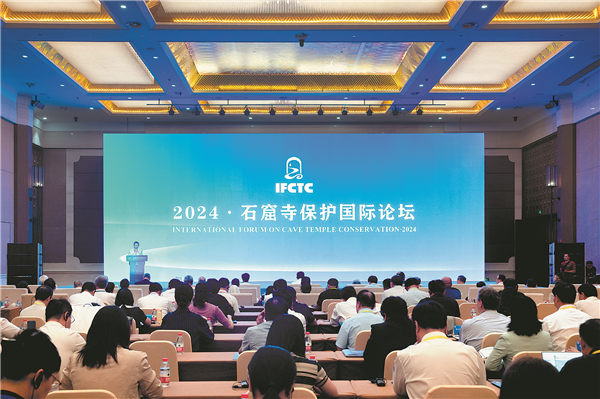Safeguarding the cultural landscape

Cave temples were highlighted at the 2024 International Forum on Cave Temple Conservation in Dunhuang, Gansu province, in August. [Photo provided to China Daily]
Protection is the key
A highlight of Sichuan's protection efforts, according to Pu Xin, deputy director of the Sichuan Provincial Cultural Heritage Administration, is the thousand-Buddha statues on a cliff of Wolong Mountain in Mianyang, Sichuan, which is among the first batch of the province's nine trial sites to be protected through rural vitalization.
"Originally built during the Tang Dynasty (618-907), the cluster is of small scale. But it has clear inscriptions indicating its construction time. The statues are of typical Tang style and have high artistic and historical value," says He.
Pu says local and provincial governments have invested nearly 10 million yuan ($1.41 million) to carry out a series of projects protecting the statues and facilitating tourists.
"We have made protective endeavors like reinforcing the slopes on the mountainside, building tourist facilities like toilets and rest areas and an exhibition hall to introduce the statues. Although the site used to be open to the public, it was lesser known with poor conditions, but now it is gaining in popularity," says Pu.
The residents welcome these changes since they are receiving better infrastructure and opportunities to benefit from tourism, he adds.
In the neighboring Chongqing municipality, a project was launched to protect 69 medium and small cave temples — consolidating the dangerous rock formations in some grottoes, adding eaves for caves, improving pedestrian walkways and protecting the drainage ditches around buildings, according to Xing Jun, deputy director of Chongqing's Cultural Heritage Administration.
-
As AI encounters Dunhuang's art, the ancient caisson ceiling bridges centuries to the present.
View all stories

 Gansu thrives from green development
Gansu thrives from green development  >
>